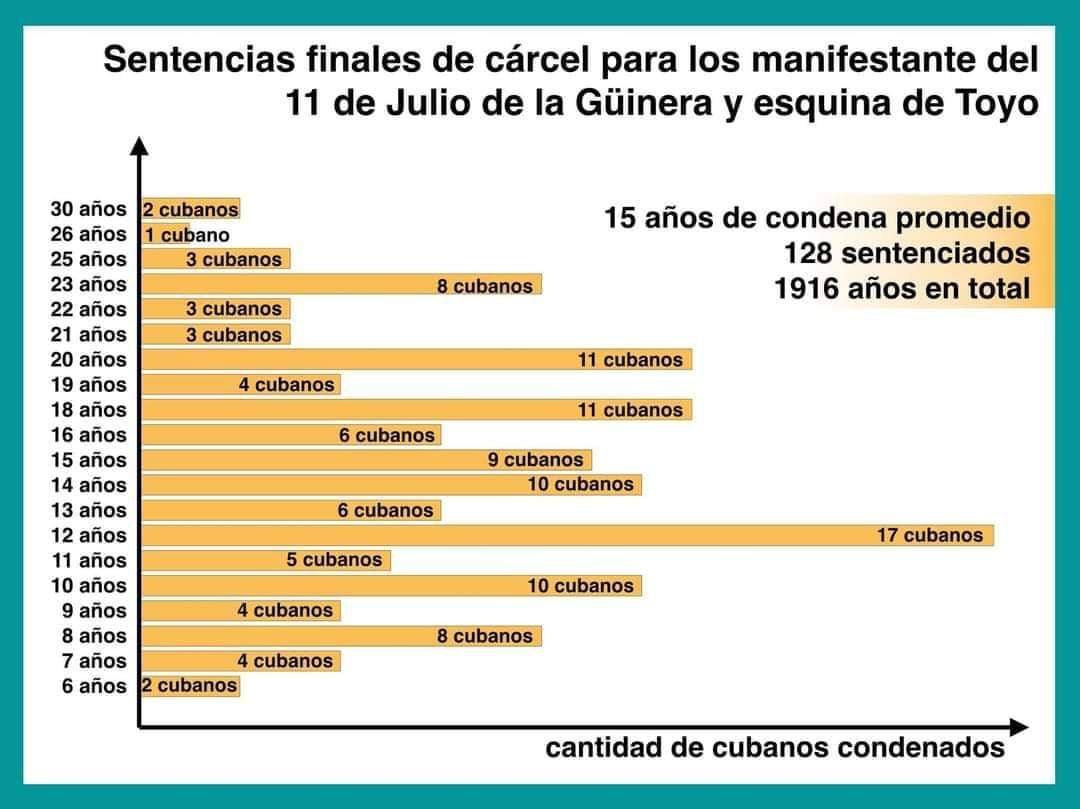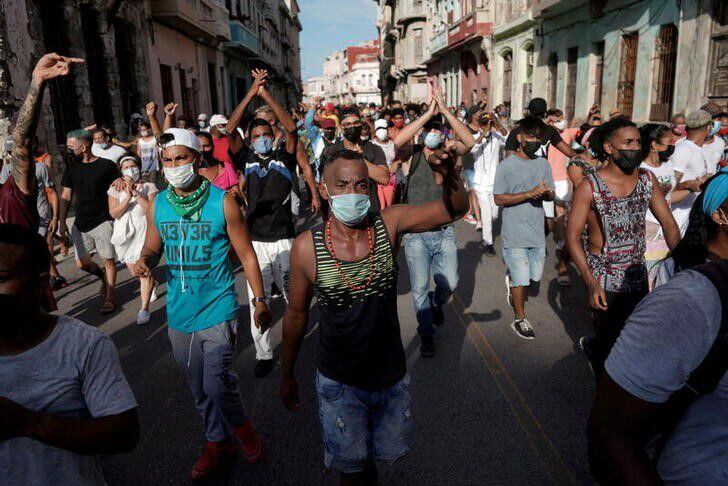
The Cuban dictatorship sentenced 128 people to a total of 1,916 years in prison for events related to the anti-government protests of July 11 in Havana. It's about 15 years of sentence on average.
Of that total, two Cubans were sentenced to 30 years in prison, one to 26 years, three to 25, eight to 23, three to 22, another three to 21 years, 11 to 20 years in prison, four to 19 and 11 to 18.
The breakdown is completed by six citizens sentenced to 16 years in prison, nine to 15, 10 to 14, six to 13 years, 17 to 12, five to 11, 10 to 10 years, four Cubans to 9, eight to eight years, four to seven and another two to six years.
These are all final prison sentences for protesters in La Güinera and Toyo's corner in Havana.
The Supreme Court of the Republic reported in a press release six judgments concerning the events that occurred in the capital municipalities of Diez de Octubre and Arrojo Naranjo, where some of the most violent incidents of the demonstrations that day took place, which were generally peaceful.

In fact, the only officially recognized death in these protests occurred in La Güinera (Arroyo Naranjo), where a man was shot dead by a policeman.
The trial of the Provincial People's Court of Havana, held between 14 December and 3 February, involved 129 accused, of whom 128 have been convicted.

A total of 127 have received prison sentences - between 6 and 30 years - and one person received a sentence of 4 years “of correctional labour without internment”. Only one defendant was acquitted.
The Supreme Court's note did not refer to ages. According to the NGO Prisoners Defenders, among those convicted there are seven young people aged 16 and 17, who have received sentences of between 7 and 19 years of imprisonment, and another, who received the sentence of corrective labor.
In Cuba, the minimum age of criminal responsibility is 16 years. The Penal Code (article 17.1) provides for the possibility of halving the sentences of persons aged 16 and 17.
The defendants, mainly investigated for sedition and theft, were accused of “serious disturbances and vandalism, with the aim of destabilizing public order, collective security and citizen tranquility,” according to the Supreme Court.
(With information from EFE)
KEEP READING:
Últimas Noticias
Debanhi Escobar: they secured the motel where she was found lifeless in a cistern

The oldest person in the world died at the age of 119

Macabre find in CDMX: they left a body bagged and tied in a taxi
The eagles of America will face Manchester City in a duel of legends. Here are the details

Why is it good to bring dogs out to know the world when they are puppies




